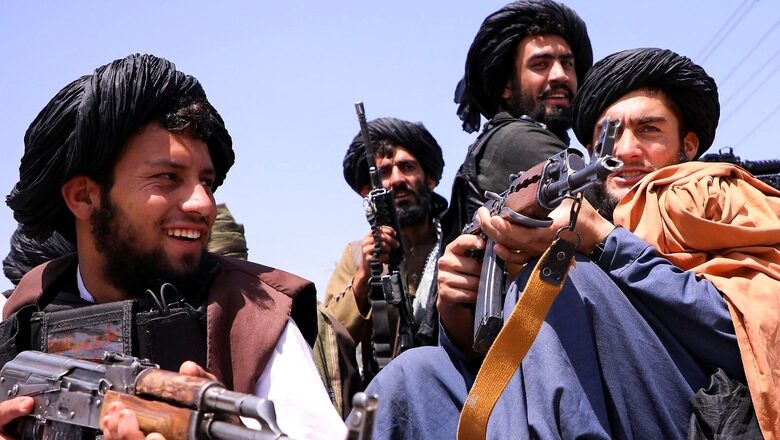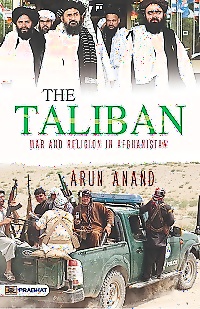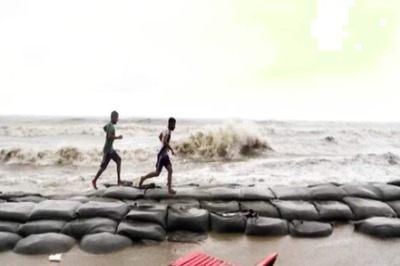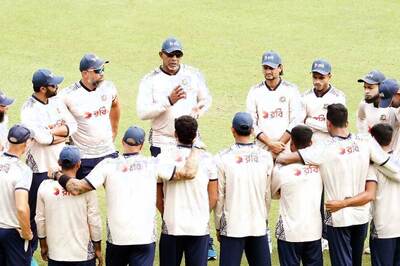
views
In the aftermath of Al-Qaeda attack in United States on 11 September, 2011 (commonly known as ‘9/11’), Operation Enduring Freedom was launched in Afghanistan on 7 October, 2001. The operation was launched by the armed forces of the United States and the United Kingdom in coordination with Afghan United Front (that primarily consisted of Northern Alliance, an anti-Taliban group). There were two declared objectives of this military operation—1. Dismantling Al-Qaeda and 2. Removal of Taliban from power in Afghanistan to create a democratic state there.
The first phase of Operation Enduring Freedom lasted from October 2001 to March 2002. It was a conventional network centric military operation that featured the Northern Alliance and other anti-Taliban Pashtun forces. The Northern Alliance was a united front of Tajiks, Hazaras and Uzbeks and still remains a force to reckon with even after Taliban recaptured the power in 2021.
On 7 October, 2001, the military operations were launched with teams from the CIA’s Special Activities Division (SAD) beginning the combat operation in Afghanistan. They were the first ones to enter Afghanistan under this military operation.
They were joined by US Army Special Forces(SF) from the 5th SF group and other units from the US Special Operations Command (USSOCOM). Air strikes were reported in the capital, Kabul (where electricity supplies were severed), at the airport, at Kandahar (home of the Taliban’s Supreme Leader Mullah Omar), and in the city of Jalalabad.
The first night of the war, it was raining around Kabul… The Taliban imposed a night curfew inside Kabul but otherwise tried to keep up appearances. Taliban bureaucrats went to work at their ministries as usual. Kathy Ganon of the Associated Press, who had been traveling in and out of Afghanistan for almost two decades, arrived in the Capital late in October(2001) and found residents paying their electricity bills at the telecommunications ministry even though the ministry itself had no power. Food supplies dwindled. Mullah Mohammad Omar remained in hiding around Kandahar, but his lieutenants to the north, inside Kabul, could see by the second week of November that if they held out too long, they might become trapped. If that happened, they could be slaughtered and imprisoned in large numbers.
Initially, the US Central Command (CENTCOM) relied heavily upon Special Operations Forces (SOF) teams that employed satellite radios, lasers, global positioning systems (GPS) and Predator unmanned aerial vehicles (UAVs) to designate targets for airstrikes, which were provided by cruise missiles and a combination of strike aircraft, including AC-130 gunships as well as strategic bombers and tactical fighters that delivered precision munitions, such as Joint Direct Attack Munitions (JDAMS). This new-era operation of precision strikes and information networks was blended with ground operations by friendly Afghan forces from the Northern Alliance to form an effective campaign for the ambitious mission at hand.
The US combat operations commenced slowly, because of the time needed to deploy forces to the region, establish suitable basis and logistics support, and secure support from friendly governments, including Uzbekistan and Pakistan. During the early stages of the war, the US military had a limited presence on the ground. The plan was that Special Forces (SF), and CIA officers with a military background, would serve as liaisons with Afghan militias opposed to the Taliban, who would advance after the cohesiveness of the Taliban forces was disrupted by US air power.
By 19 October, Special Operations Forces (SOF) teams and CIA operatives were in place with Northern Alliance forces, and CENTCOM was able to deploy nearly 400 aircraft and 32 ships, including two US aircraft carriers in the Indian Ocean to support the operations. Over the next two months, major success was achieved. Bombers operating at high altitudes, well out of range of antiaircraft weapons, dropped bombs at Afghan training camps and Taliban air defences. US air strikes quickly destroyed Taliban bases, defences, headquarters, air defences and logistics support. On the ground Northern Alliance forces were lightly armed and outnumbered by the enemy by a margin of two-to-one. But supported by the US’ precision air strikes, the Northern Alliance forces steadily overpowered Taliban and Al-Qaeda resistance.
US aircraft including Apache helicopter gunships from the 101st Combat Aviation Brigade operated with impunity throughout the campaign with no losses from Taliban defences. The strikes initially focused on the area in and around the cities of Kabul, Jalalabad and Kandahar. Within a few days, most Taliban training sites were severely damaged and the Taliban’s air defences were destroyed. The campaign then focused on command, control and communication targets which weakened the ability of Taliban forces to communicate. However, the line facing the Afghan Northern Alliance held, and no tangible battle field successes had yet occurred on that front. Two weeks into the campaign, the Northern Alliance demanded the air campaign focus more on the front lines.
The next stage of the campaign began with the carrier based F/A-18 Hornet fighter bombers hitting Taliban vehicles in pinpoint strikes, while other US planes began cluster bombing Taliban defences. The Northern Alliance commanders finally began to see the substantive result that they had long hoped for on the front lines.
At the beginning of November, Taliban front lines were bombed with daisy cutter bombs, and by AC-130 gunships. The Taliban fighters had no previous experience with American firepower, and often even stood on top of bare ridgelines where SF could easily spot them and call-in close air support. Taliban frontal positions were devastated, and Northern Alliance march on Kabul seemed possible for the first time.
Foreign fighters from Al-Qaeda took over security in the Afghan cities demonstrating the instability of the Taliban regime. The US forces and the Northern Alliance also began to diverge in their objectives. While the US was continuing the search for Osama Bin Laden, the Northern Alliance was pressing for more support in their efforts to finish off the Taliban and control the country. Consequently, the Northern Alliance and their CIA/SF advisors planned their offensive to seize Mazar-e-Sharif, thereby cutting off Taliban supply lines and enabling flow of equipment from the countries to the north, followed by Kabul itself.
Iranian and American Special Forces worked jointly to liberate Herat in November 2001. These forces worked with Afghan opposition groups on the ground, in particular the Northern Alliance. The UK, Canada and Australia also deployed forces and several other countries provided bases, access and overflight permissions.
Over the next three weeks several key towns fell and Taliban had to retreat from there. The prominent amongst them were Kunduz, Herat and Mazar-e-Sharif. Kandahar, the stronghold and the real seat of power of Taliban fell on 9 November indicating complete rout of Taliban within a month of beginning of Operation Enduring Freedom.
By mid-December, Taliban was completely out of power and an opposition government led by Hamid Karzai and recognized by the United Nations was installed on December 22, 2001 in Afghanistan. The US-led coalition forces had suffered only twelve military deaths, a CIA officer, Johnny Micheal Spann, also lost his life at the hands of Taliban. Operation Enduring Freedom was hailed as a great success by the US and the West. But probably in its success lied the seeds of the revival of Taliban.
Steve Coll aptly analysed, “Its success blinded many American politicians, commanders, and C.I.A. leaders to the losses inflicted on Afghans and the political risks of their strategy.”
The U.S.-led coalition dropped about twelve thousand bombs on Afghanistan that autumn, about 40 percent of them “dumb,” or unguided, according to an analysis by Carl Conetta of the Center for International Policy. Hank Crumpton at the Counterterrorist Center estimated that the campaign killed “at least ten thousand” foreign and Taliban fighters, “perhaps double or triple that number.” By the conservative estimate of Boston University political scientist Neta Crawford, between 1,500 and 2,375 Afghan civilians also died. Some perished in plainly avoidable mistakes when American bombers destroyed civilian villages and extended families. The arbitrariness of these civilian deaths planted seeds of bitterness. So did the C.I.A.’s revived client Abdul Rashid Dostum, who accepted the surrender of several thousand Taliban and allied prisoners in November. Hundreds of those prisoners soon died from suffocation after being stuffed into shipping containers or shot by guards. Dostum said he was in Kunduz and he did not order the actions that led to the deaths, and did not learn about them until a year later. In any event, the Bush administration did nothing to hold anyone accountable for the massacres; Dostum entered politics and soon held high office.
The United States had no serious plan for Afghanistan after the war. The nearly uniform worldwide support for Hamid Karzai’s interim government created a framework for massive reconstruction and for new politics. Yet the Bush administration had little appetite for nation building or peacekeeping. Osama Bin Laden and Mullah Mohammad Omar had escaped. Afghanistan’s cities lay in the hands of strongmen, many of them C.I.A. clients, whose previous turns in office had been marked by abuse, internecine fighting, and incompetence. Thirty years of war—and now, after Operation Enduring Freedom, thousands of additional bombs dropped on the country—had left Afghanistan prostrate. Life expectancy and child mortality rates—to the extent they could be measured at all—stood at the very bottom of the U.N.’s worldwide human development tables. The country’s only real equities were international goodwill and some collective memory of a multi-ethnic country that had once been peaceful.

Read all the Latest News , Breaking News and IPL 2022 Live Updates here.














Comments
0 comment